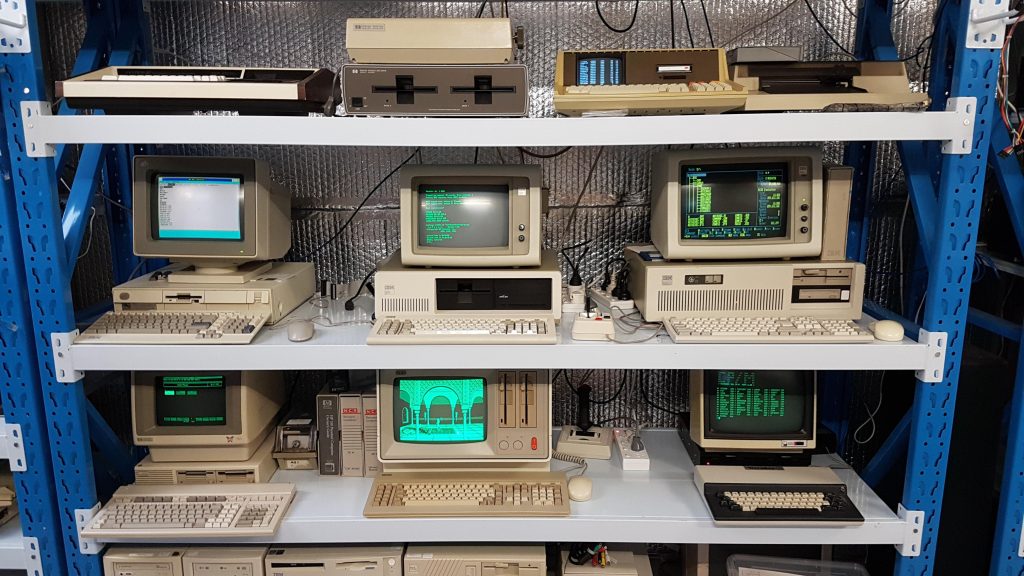
Why “jmp start ;microcomputers”? Well, ultimately it’s just a name. It sounds like “jump start”, but it’s also a pretty common line of assembly language. It’s a bit technical, but so is this site. I tried some AI names, but this came out of my head.
A microcomputer is a computer that is based on a microprocessor; a highly integrated processing unit that first appeared in the early 1970s. The term “microcomputer” was used a lot during this early adoption period but fell out of fashion by the early 1990s. Microcomputers are now referred to as PCs, notebooks, tablets, phones etc, so i use the term “microcomputer” as a shorthand for “vintage microcomputers” which are the subject of this site.
As i emerged from high school in the early eighties, microcomputers were the tech that everyone wanted, and this prompted me to enter the world of electronics. I got to play with several early machines, but there were so many that it was impossible to experience the gamut.
Over the last 8 years, i’ve had the opportunity to not just reacquaint myself with some familiar machines, including a couple i sequestered from those times, but also to experience many that i missed the first time around.
I’ve purchased many of my treasures through well known online marketplaces, but i have also acquired many from colleagues at the Adelaide Retro Computing Group – always at reasonable cost and often as generous gifts. I’ve tried to acknowledge significant gifts as i’ve added detail, but i apologise in advance if i have missed anyone.
I’m typically interested in workhorse machines but use the occasional game to demonstrate what a computer can do, or in many cases its limitations.
Making machines shine figuratively is my goal, including:
- Getting them working
- Getting them working again after they stop
- Adding software
- Adding accessories
- Connecting them
My machines are not pristine or mint – i aim for tidy and functional. I like them to be exercised regularly and standing by, ready to save mankind when the current tech collapses in upon itself like an abused CRT.
Generally i will try to make sure that machines are either original or can be readily taken back to original – and that includes modifications from, or typical of, the operating period.
I do compromise on hard disks; they are difficult to source and inherently unreliable. I never bin them, but i don’t think twice about replacing them with hard disk emulators. I also use disk emulators alongside original storage peripherals to make it easier to try, and to demonstrate, a greater range of software.
The purpose of this site is to:
- Show off some of my machines
- Make what i’ve learnt available to others
- Promote related local activities and groups
The info that i’m posting has been extracted from the notes that i have accumulated since 2017. Those notes were pretty rough and not always complete. Mostly i’ve rewritten them here, but their heritage still comes through in places.
My hobby relies on the amazing work that has been done by so many people to archive data – programs, disk images, data sheets, schematics, manuals, articles, photos, problems and solutions. I use these resources extensively, and i am grateful for them. I try to pay this forward by archiving disks and documentation to archive.org or other appropriate sites such as Microbee Technology.